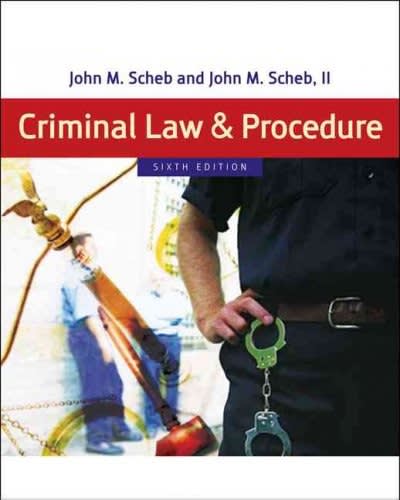Question
1: If You were in the position of Johnnie C. Dobbs, what is your analysis of Wal-Marts supply chain? Are the companys supply chain capabilities
1: If You were in the position of Johnnie C. Dobbs, what is your analysis of Wal-Mart’s supply chain? Are the company’s supply chain capabilities still a source of competitive advantage? Why or why not?
2: What is your evaluation of the remix and RFID initiatives?
3: Is the company’s target of maintaining inventory growth at a rate of 50 per cent of sales growth reasonable?
4: As Johnnie C. Dobbs, what recommendations would you make to the CEO? Where do you see the opportunities for Wal-Mart in its global supply chain?
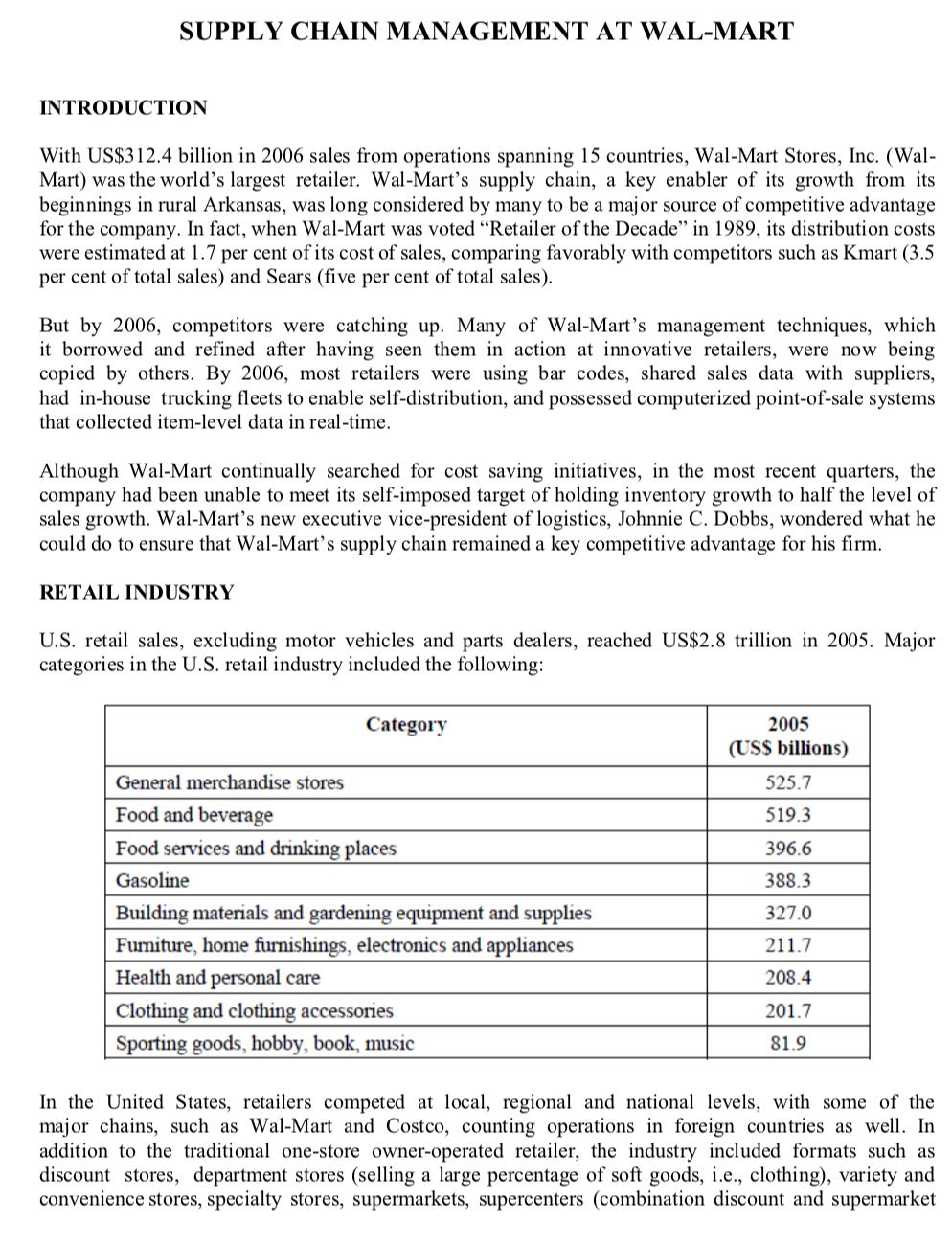

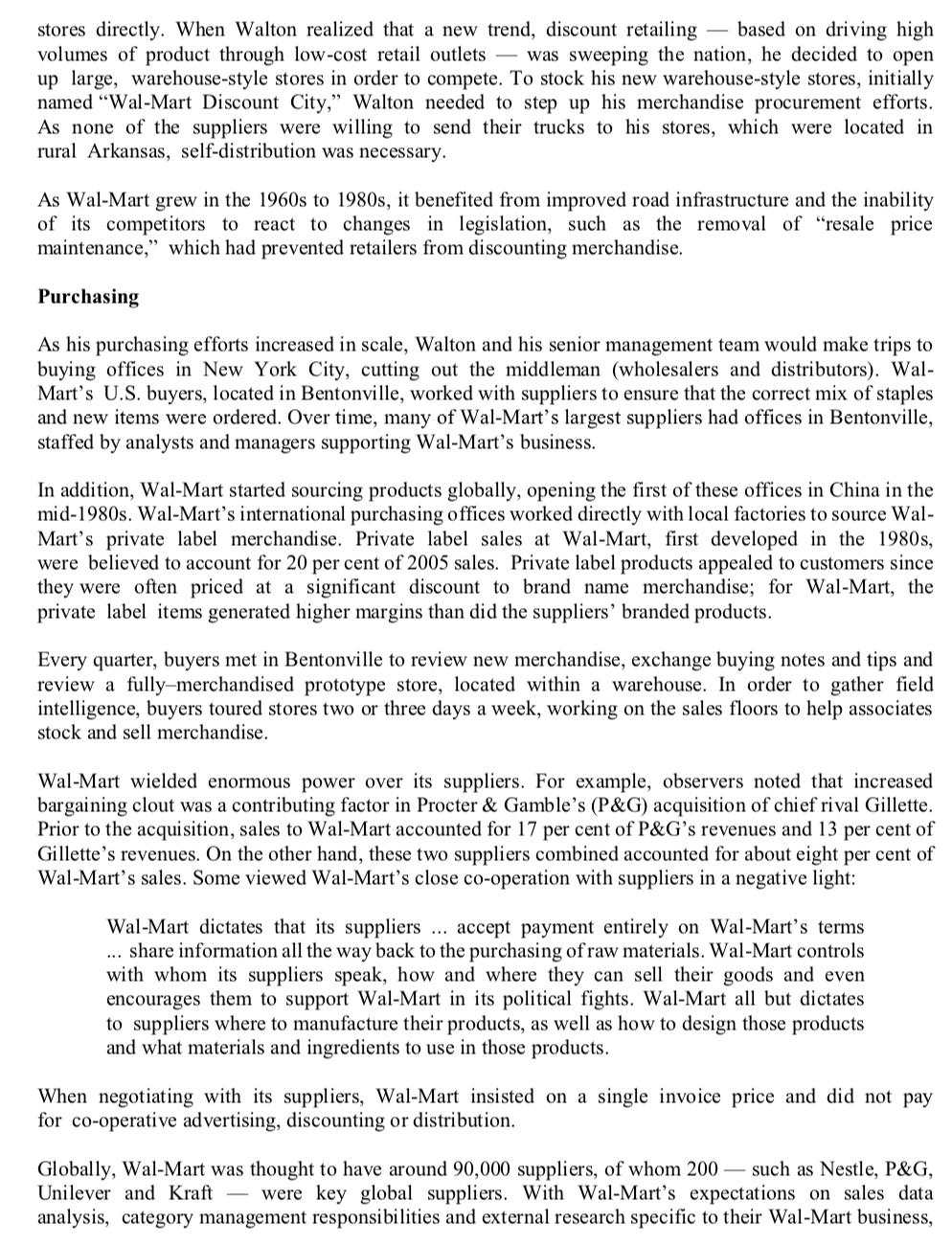

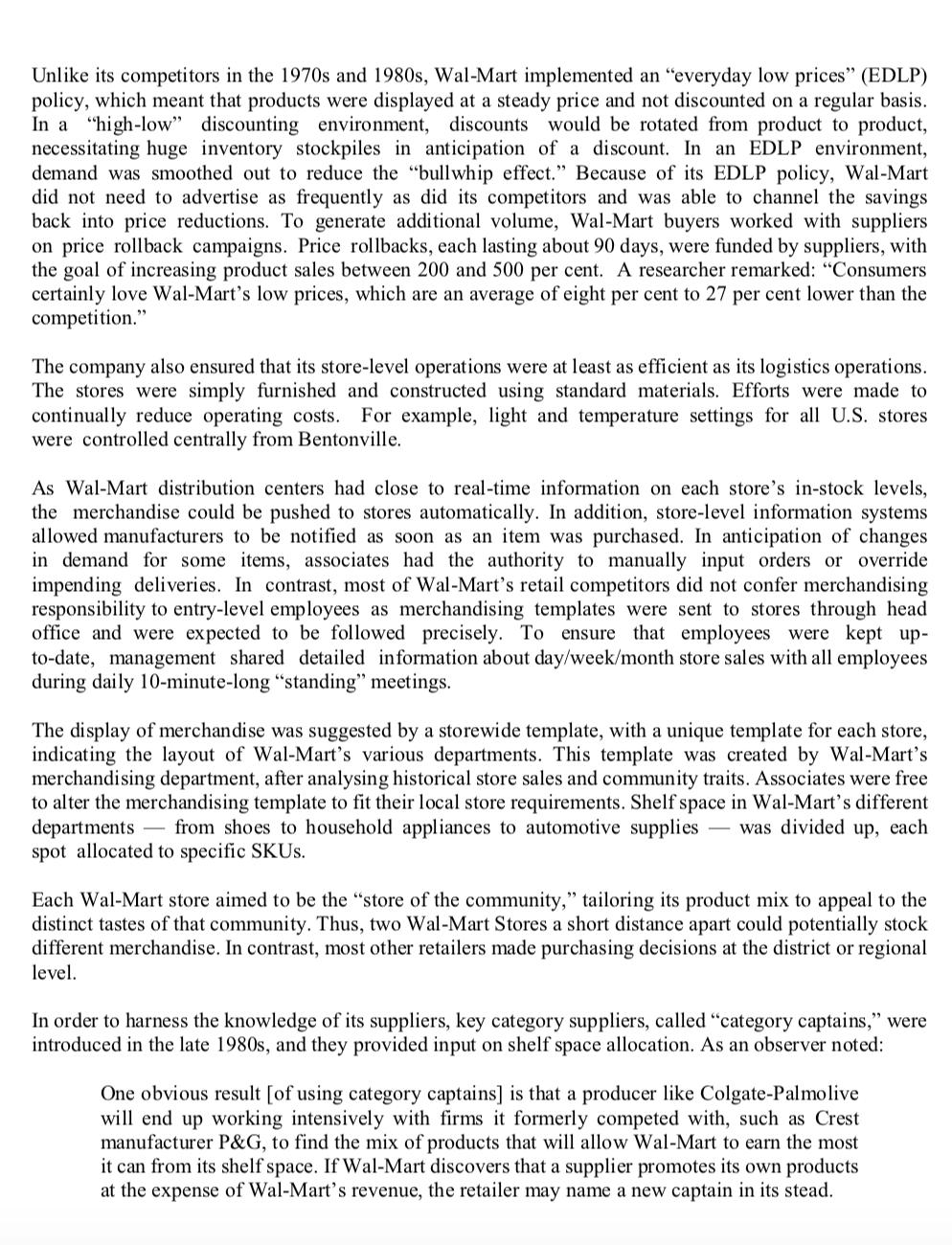
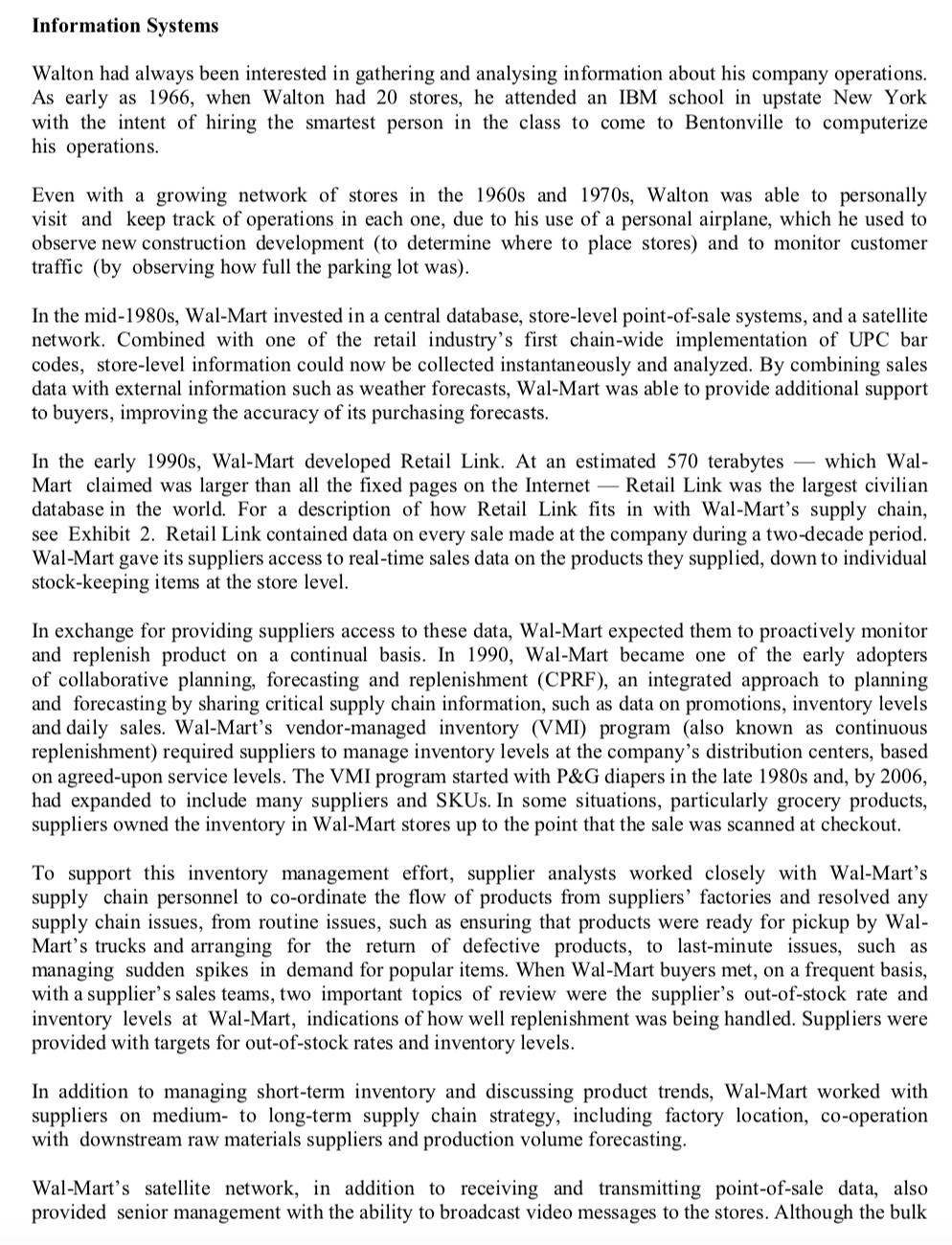
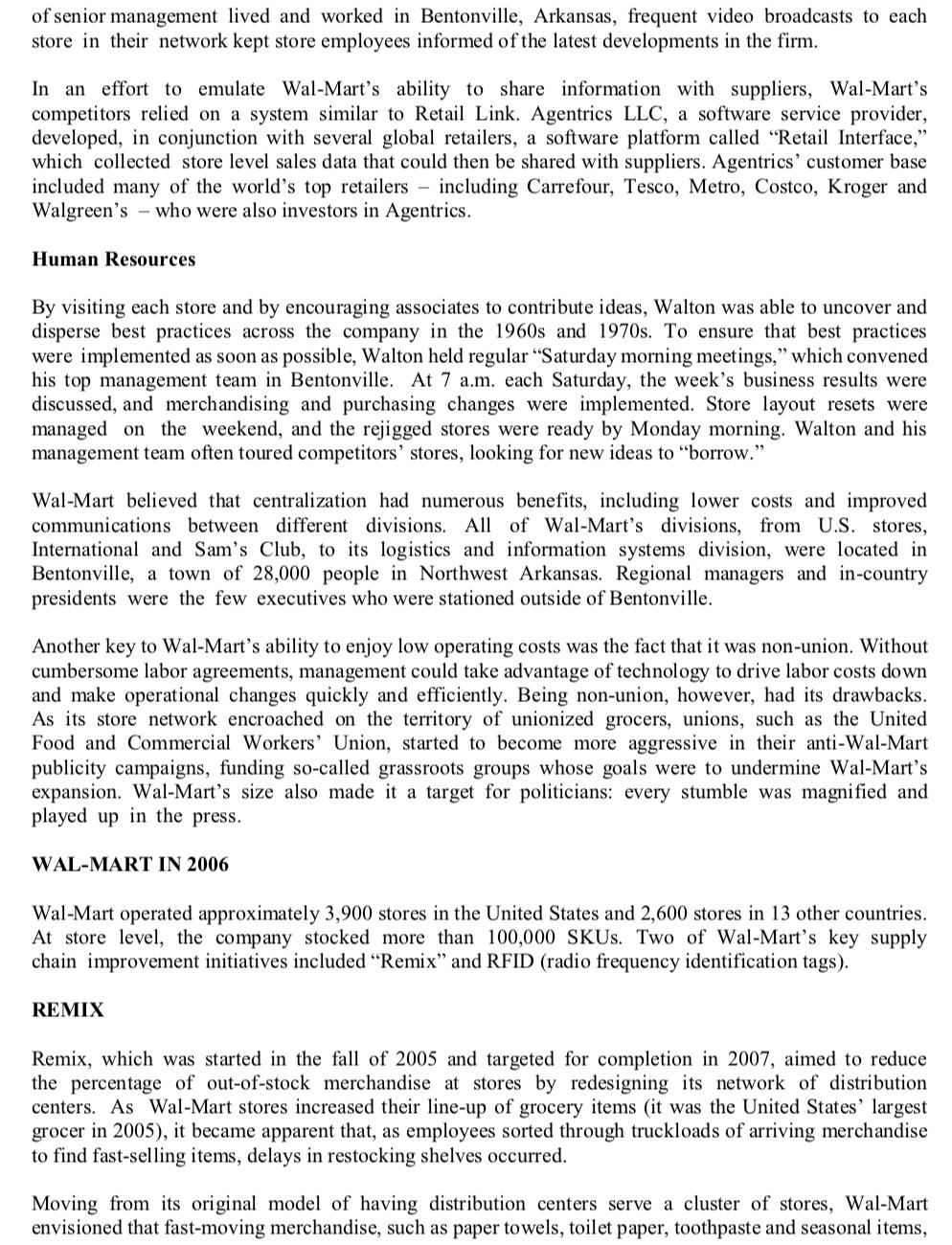
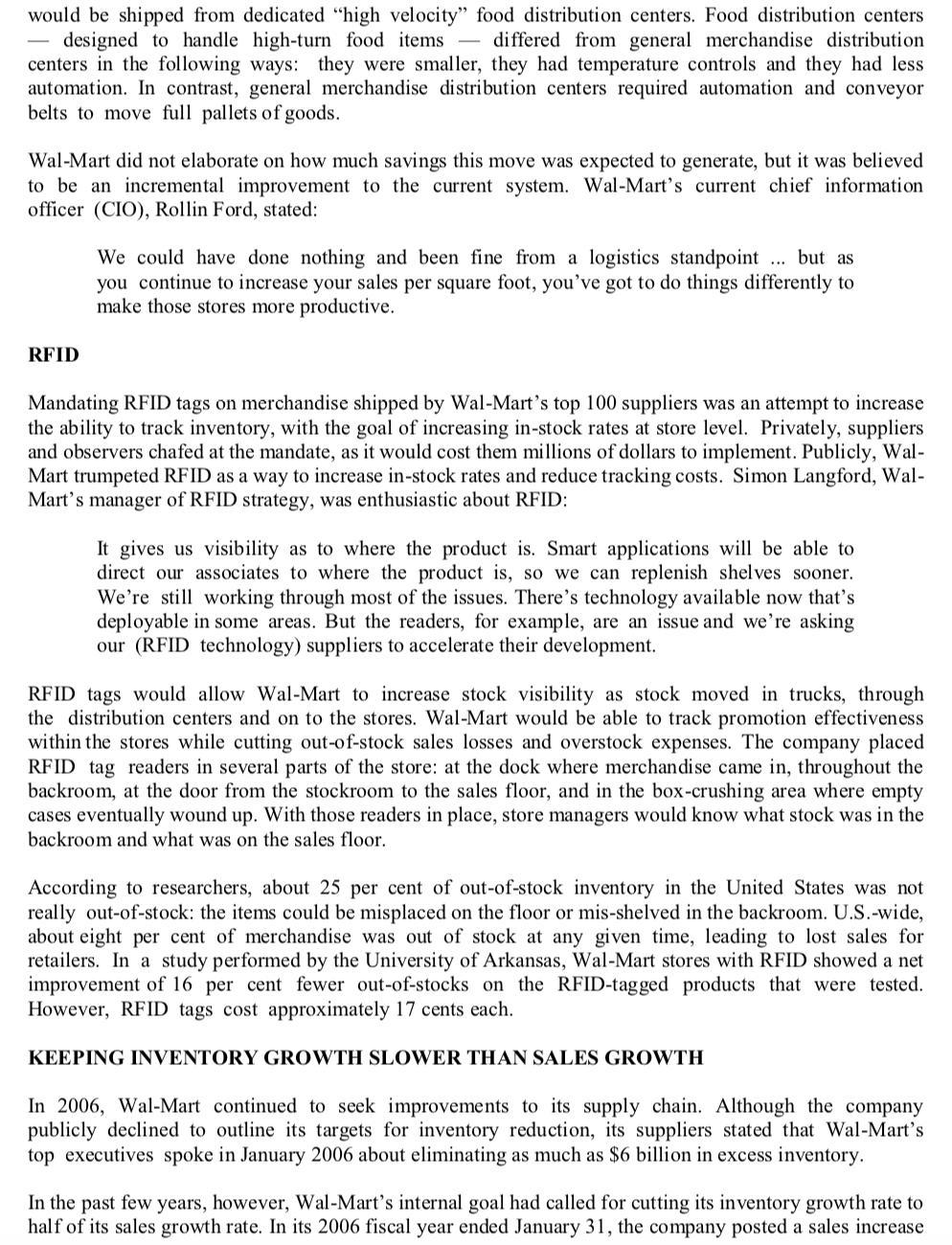

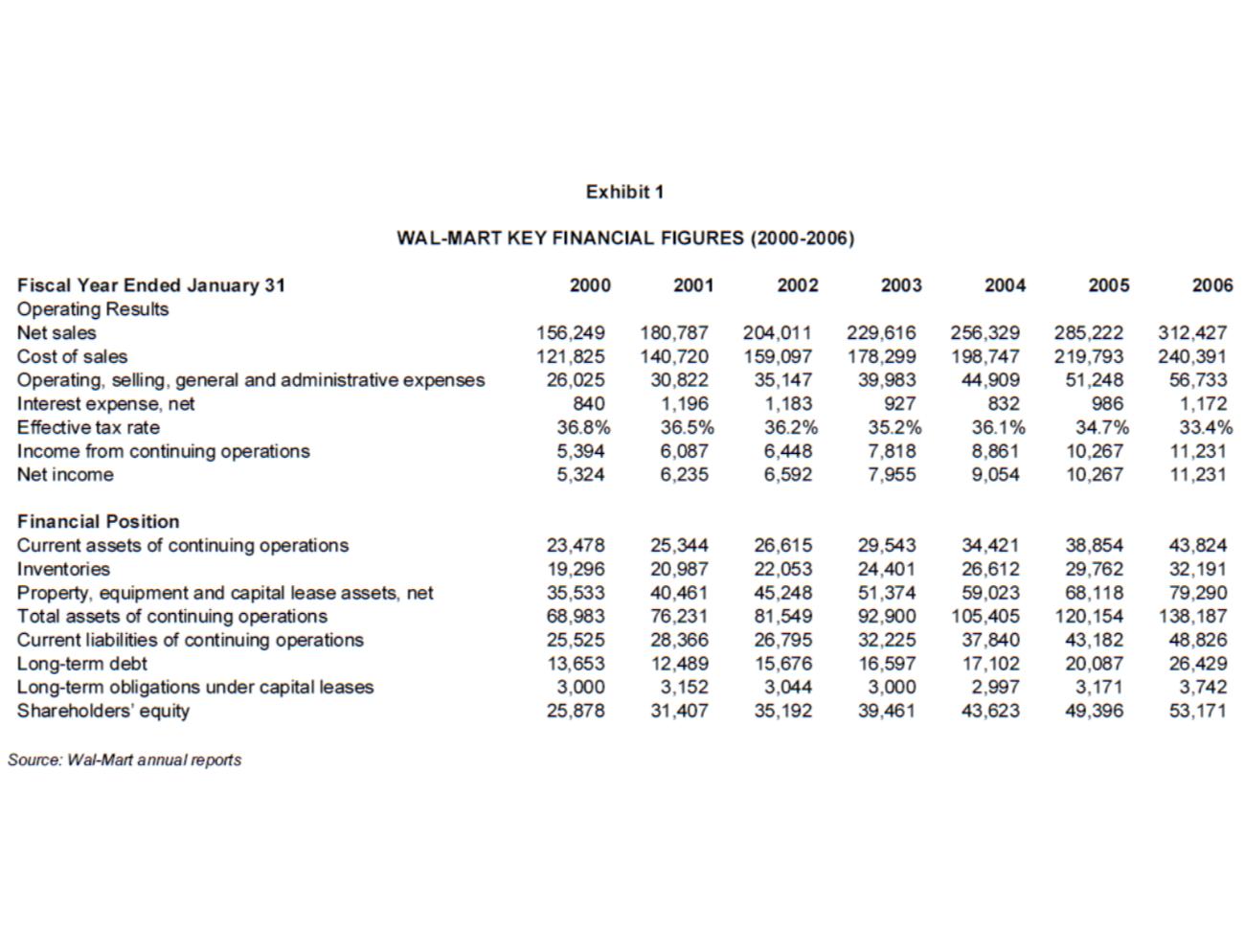
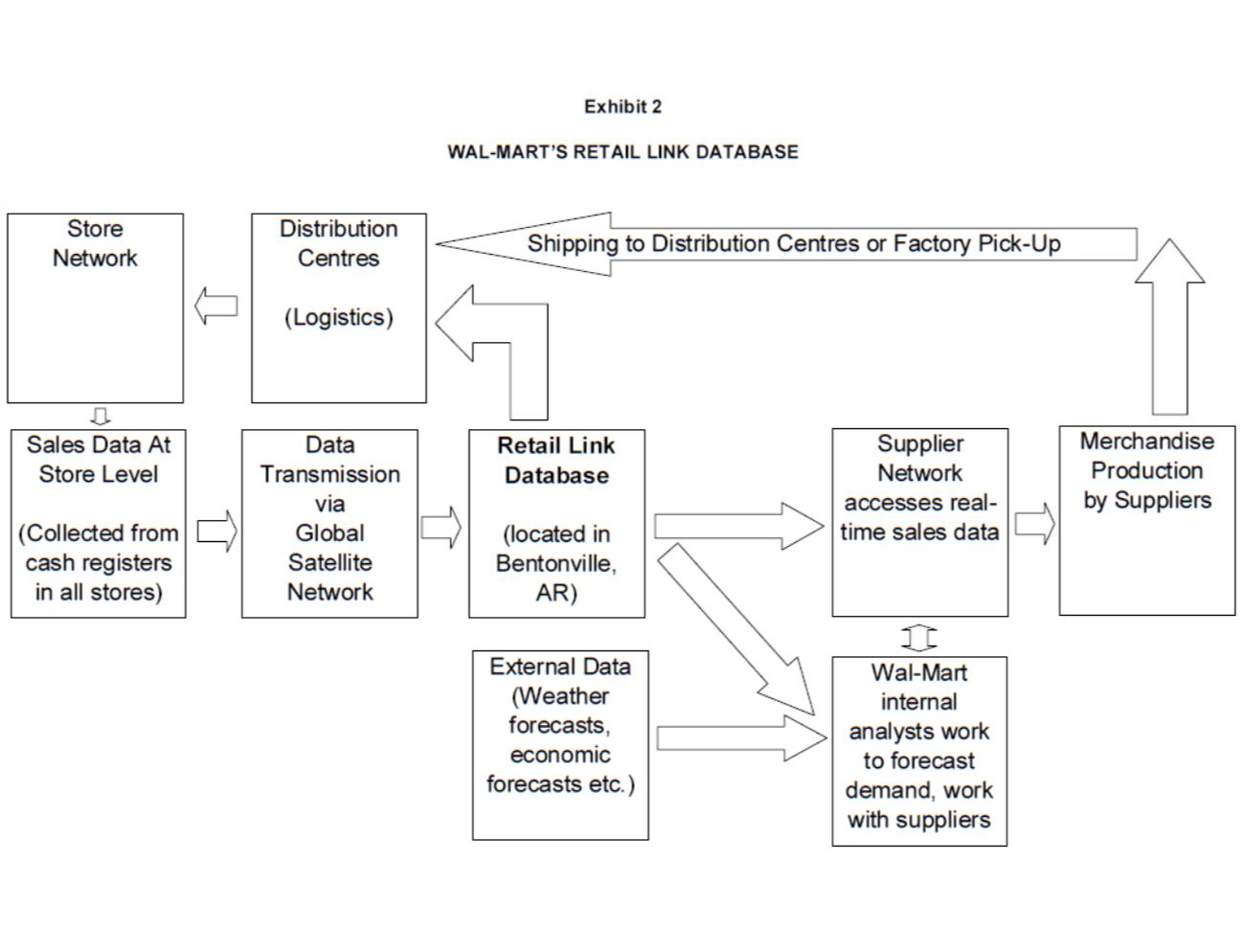
![Exhibit 3 COMPETITORS FINANCIAL INFORMATION (2005 Figures Except for Federated Department Stores [2004]) in millions of doll](https://dsd5zvtm8ll6.cloudfront.net/si.experts.images/questions/2021/11/61a612a987b44_1638273693742.jpg)
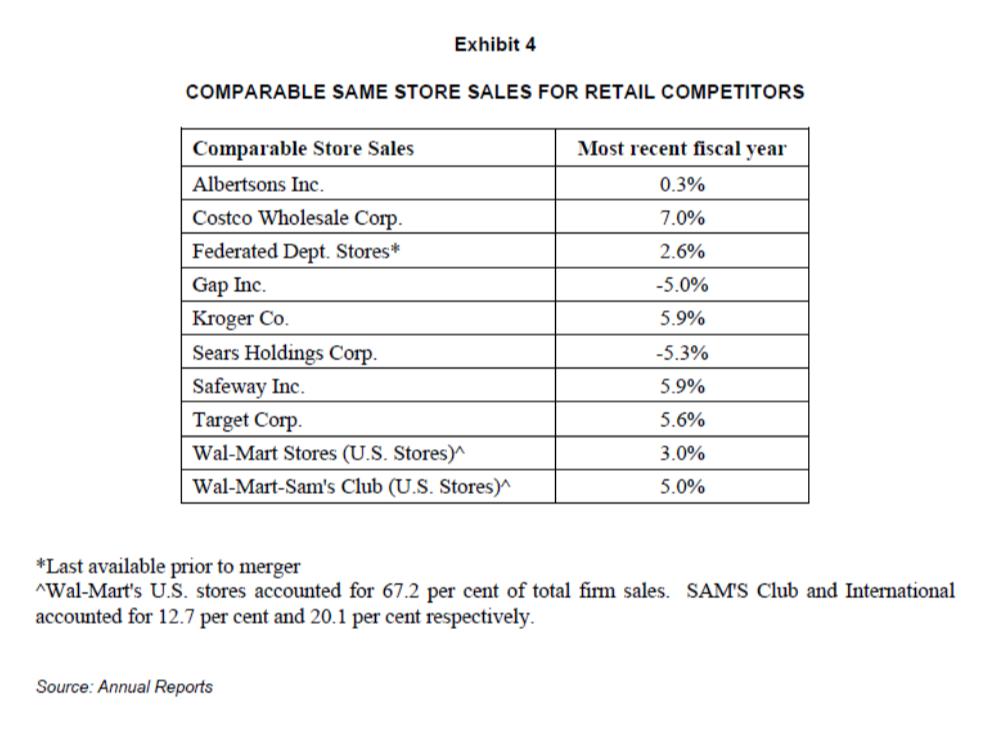 r
r
SUPPLY CHAIN MANAGEMENT AT WAL-MART INTRODUCTION With US$312.4 billion in 2006 sales from operations spanning 15 countries, Wal-Mart Stores, Inc. (Wal- Mart) was the world's largest retailer. Wal-Mart's supply chain, a key enabler of its growth from its beginnings in rural Arkansas, was long considered by many to be a major source of competitive advantage for the company. In fact, when Wal-Mart was voted "Retailer of the Decade" in 1989, its distribution costs were estimated at 1.7 per cent of its cost of sales, comparing favorably with competitors such as Kmart (3.5 per cent of total sales) and Sears (five per cent of total sales). But by 2006, competitors were catching up. Many of Wal-Mart's management techniques, which it borrowed and refined after having seen them in action at innovative retailers, were now being copied by others. By 2006, most retailers were using bar codes, shared sales data with suppliers, had in-house trucking fleets to enable self-distribution, and possessed computerized point-of-sale systems that collected item-level data in real-time. Although Wal-Mart continually searched for cost saving initiatives, in the most recent quarters, the company had been unable to meet its self-imposed target of holding inventory growth to half the level of sales growth. Wal-Mart's new executive vice-president of logistics, Johnnie C. Dobbs, wondered what he could do to ensure that Wal-Mart's supply chain remained a key competitive advantage for his firm. RETAIL INDUSTRY U.S. retail sales, excluding motor vehicles and parts dealers, reached US$2.8 trillion in 2005. Major categories in the U.S. retail industry included the following: Category General merchandise stores Food and beverage Food services and drinking places Gasoline Building materials and gardening equipment and supplies Furniture, home furnishings, electronics and appliances Health and personal care Clothing and clothing accessories Sporting goods, hobby, book, music 2005 (US$ billions) 525.7 519.3 396.6 388.3 327.0 211.7 208.4 201.7 81.9 In the United States, retailers competed at local, regional and national levels, with some of the major chains, such as Wal-Mart and Costco, counting operations in foreign countries as well. In addition to the traditional one-store owner-operated retailer, the industry included formats such as discount stores, department stores (selling a large percentage of soft goods, i.e., clothing), variety and convenience stores, specialty stores, supermarkets, supercenters (combination discount and supermarket
Step by Step Solution
3.42 Rating (180 Votes )
There are 3 Steps involved in it
Step: 1
As Johnnie C Dobbs here is my analysis and evaluation of WalMarts supply chain along with my recommendations and insights on the companys initiatives and future opportunities 1 Analysis of WalMarts Su...
Get Instant Access to Expert-Tailored Solutions
See step-by-step solutions with expert insights and AI powered tools for academic success
Step: 2

Step: 3

Ace Your Homework with AI
Get the answers you need in no time with our AI-driven, step-by-step assistance
Get Started


